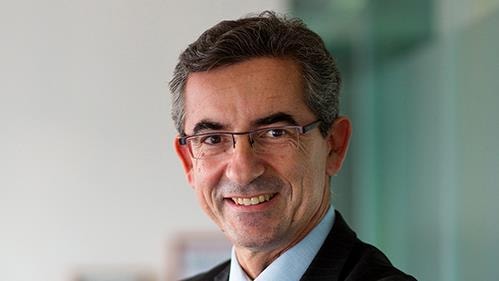The Nordic countries have been at the vanguard of innovation in digital, mobile, and instant payments for decades. They combine a vibrant competitive landscape of banks, payments specialists, and start-up challengers with a long tradition of cooperation and collaboration. This dynamic has facilitated step-change advances and improvements along the payments value chain from infrastructure services to customer offerings (see sidebar “Innovation and the role of utilities”).
In early 2021, McKinsey met with three leaders from the region’s payments industry to discuss innovation and their thoughts on the future.
McKinsey: The Nordic countries are renowned for innovation in payments. Why do you think that is?
Claus Bunkenborg: One reason is that Scandinavian markets are small, so our governments have supported banks in collaborating over debit cards, bank IDs, and payments infrastructure for the past 40 years. That paved the way for an early digital transformation of society that allowed banks to drive innovation. The second reason for our success as innovators is that we trust our governments more than many countries do, and we’re willing to share information. This combination of trust and collaboration created a strong foundation for today’s industry.
Peter Klein: We have some amazing collaboration happening not only across the Nordic region, but also domestically with governments and stakeholders. People understand it’s better to come together. But although we like each other, we also like to compete, and we’re good at stimulating competition in the region.
Lars Sjögren: Let’s not forget we have a history of conflict too. There have been a lot of wars waged between Sweden and Denmark over the years. On the other hand, more peace treaties have been signed between Nordic countries than anywhere else, and we had monetary unions as early as 1873. We’ve never competed with one another for global domination in a particular sector, because each country follows its own path: Sweden as an industrial nation, Denmark as a trader, Norway with its oil. So we’ve learned how to compromise, and being small, we realize we’re stronger together.
McKinsey: How did the Nordics get so far ahead in the adoption of mobile payments?
Claus Bunkenborg: I think it was because we built on this legacy of joining forces. Although MobilePay is owned by Danske Bank1, for instance, we didn’t launch it as a solution for Danske Bank customers only; it’s a partnership between all the banks. Every Dane and every Finn can use it no matter where they bank, and that fueled rapid adoption. A lot of other mobile-payment solutions around the world required customers to have a particular bank or card or telecoms provider, whereas MobilePay aimed to be accessible to everyone.
Our other advantage was that we focused on solving a genuine pain point: peer-to-peer payments. In-store payments weren’t a pain point for Nordic customers; we trust the cards in our wallets that we’ve used for decades. But we don’t carry cash, so focusing on P2P had an instant “wow” effect on a wide user group, not just nerds. And it grew exponentially and gained traction in other use cases, such as e-commerce and even in-store payments.
McKinsey: Where do you think collaboration will emerge next?
Lars Sjögren: If we go back a step, one of the reasons MobilePay took off was its simple sign-on process. Download the free app, take a minute to sign up, and then you can send money as easily as you can send an SMS. It’s a fantastic user experience. The question then is how you scale it. MobilePay has close to six million users across Denmark and Finland, so where do you go next—Nordic or pan-European?
One use case is the cross-border international client. Why can’t a Danish MobilePay user make a payment in Sweden? There’s huge scope for innovation in that respect. So it’s a matter of expanding horizontally or geographically, finding new use cases, and keeping it simple. Sometimes we can be too innovative.
Peter Klein: I love the way P27 is becoming a benchmark for a regional approach to moving money across borders. What we need now is the “plumbing” that connects everything together: a solid infrastructure driven by rules and governance structures on which we can build a more dynamic payment model. Old models like correspondent banking have served us well for many years but are no longer fit for purpose when it comes to delivering on the demand for faster global payments. We need to figure out how to carefully transition from that legacy state to a model that is better suited to today’s regional and global commerce. I think P27 is a prime example of doing exactly that.
Lars Sjögren: I think the market needs to figure out where we compete. Is it about my bank having a better infrastructure than your bank? Probably not, especially in a world where scale is everything. So you need to decide where it makes sense to work together and compete to the death on other areas that are more value creating.
Claus Bunkenborg: Absolutely. We can get more scale by joining forces with some of our sisters across the world. But we need the plumbing, as Peter calls it, and the other infrastructure elements. If we don’t all support it, we’ll only get halfway. Making a payment from Denmark to Sweden, 20 kilometers across the water, is still quite difficult even if the plumbing is in place. We need to fix all the variables in this equation.
Lars Sjögren: Look at Europe, which has many clearinghouses and payments platforms. Someone comes up with the idea of building a pan-European system. There’s one already, so they build a new one and create competition between the platforms. But to grow quickly, you should do what P27 did: replace the platforms, not build another set alongside them.
Peter Klein: The payments business is becoming increasingly commoditized; margins are eroding. If we don’t improve the model and reduce operating costs, it’ll be game over for anyone not willing to embrace the new world.
Banks and other ecosystem players are used to sharing, and we know we can’t survive by building things on our own. Collaboration is in our DNA.
McKinsey: Nordic banks are collaborating and showing good industry conduct against a rich competitive backdrop of fintechs and innovators.2 Do you see that as a contradiction?
Claus Bunkenborg: Banks and other ecosystem players are used to sharing, and we know we can’t survive by building things on our own. Collaboration is in our DNA, as we were saying. We speak English almost before we speak Danish or Swedish. And the government supports us in working together and sharing data. Regulators have created environments where fintechs can access tax data for critical applications, for instance. I think this openness makes us different from other countries.
McKinsey: If you’re a traditional bank or infrastructure provider, how should you think about fintechs and other innovative players? Should you be wary of them?
Peter Klein: I think you should welcome them. Many of the fintechs collaborate with traditional banking services and rely on partnerships, and we see them wanting to build stronger partnerships while still competing in other areas. That’s going to continue. The rules of engagement are changing, but that shouldn’t prevent anyone from exploring ways to partner.
Lars Sjögren: Our starting point in Sweden is a well-educated and tech-savvy population who like to try new things, so our barriers to innovation are low. Our banking sector is fairly consolidated with four players, but it has profit pools that are easy to attack if you have the digital means to do it. That’s another driver of fintech innovation in the Nordics: when banks decide to leave certain areas, along comes something like Klarna and takes over.
Let’s not forget that our countries share something else besides culture: a heavy dependence on international trade. The Danes are traders practically from birth, and before they found oil, the Norwegians were a seafaring nation. We’ve always depended on the world outside.
McKinsey: Looking at all the innovation from Nordic banks and infrastructure providers, what’s in it for me as a customer? What should I get excited about?
Claus Bunkenborg: You’re getting access to innovative solutions much more quickly than you would in other markets of a similar size, and those solutions are more standardized and more widely accepted. From a merchant’s point of view, accepting a new form of payment carries less risk because it’s supported by the whole community. When you combine digital readiness with collaboration between banks, you take a lot of cost out of the system and provide society with convenience and a lot of other benefits.
Lars Sjögren: If I knew what was coming next, I would know where to invest my money! But I do believe a shift is under way. After years of talking about the Internet of Things, we finally have smart homes. I walk through my door, the lights go on, and I can voice-control everything; it’s like science fiction. But if your fridge orders your food, how does it pay? I think we’ll see a lot of innovation there.
Another promising area is automated solutions that simplify and take care of many different chores. Why doesn’t my digital voice assistant tell me, “All these payments are the same as last month, but what’s this one for a ski trip? Is that wise in a pandemic?” As a customer, I still have to go to my internet or mobile bank for these things. I agree that scaling up is the big challenge. Some Nordic banks and fintechs have managed it, though many are stuck in our small countries. But I think P27 is breaking down export barriers and building a bigger home market, not just for fintechs but for other companies too.
McKinsey: Can we dig more deeply into why collaboration and competition coexist so productively in the Nordic payments value chain?
Lars Sjögren: If you’re building on a decades-old infrastructure, you can only go so far. The banks behind P27 realized that to meet the likes of Revolut and Alipay head-on, you need a solid foundation, and you can only achieve that by working together. That’s complicated when some banks are domestic, some are large, some are centralized, some are bureaucratic, and some are going agile. To change the ecosystem, everyone has to go at the same pace, hand in hand. You need a sense of urgency, a robust business case, and a bit of pressure as well. Swish didn’t start because Swedish banks suddenly realized that mobile payments are great, but because four telcos announced they were going into payments. Never underestimate the power of an external threat.
McKinsey: What do you see as the main trends affecting the industry, and how can payments players address them?
Claus Bunkenborg: One trend is instant payments, mostly driven by P27. Another is yet more growth in online, even though volumes are already doubling year on year. And then it’s back to scale again. Take MobilePay: after seven years, we have a very strong brand and fantastic growth, yet we’re still not profitable; we need more scale. So I believe we’ll see more consolidation and collaboration in the next few years.
Peter Klein: Something that’s top of mind for me is financial crime. During the pandemic, attacks on financial institutions have risen by some 40 percent, and identity theft is increasing too. That’s pretty scary when you think about it. And then the second trend is investment in emerging technologies. I’m a blockchain/CBDC3 evangelist, and I think we’ve reached a tipping point. There are very exciting times ahead, although it’s important to appreciate that not all problems can be fixed with a sledgehammer solution. We need to collaborate more closely to help maximize the benefits of these new technologies and realize the potential they offer us as an industry.
Lars Sjögren: I think instant is the new frontier. We’re not there yet, but we’re down to 40 seconds. After P2P, the corporate side will be next. Once we have real-time cross-border infrastructure, we’ll see great use cases and a universe of cash-management solutions. Then comes global connectivity, with huge opportunities for a couple of players to connect regional hubs.
Another area to look at could be regulatory supervision and oversight, which varies even among the Nordics. Banks have a single license, but if you’re a payments provider, different countries have different rules. Perhaps the FSB4 road map for cross-border payments will solve the problem over the next ten years, but it’s more urgent than that. If regulators don’t make things easier for institutions that work in a solid way, bottom up, then unregulated competitors will move in. But if the EU acts quickly, it could help us build a strong foundation for the future to drive even more innovation.
McKinsey: If you were to offer payments players one piece of advice to help them go in the right direction, what would it be?
Claus Bunkenborg: Don’t be afraid of collaboration.
Lars Sjögren: Prepare for a P27 future, because we’re just around the corner. More seriously, find out who your friends are—those with similar interests, those you can trust. Find a common denominator you can work from and get started. And don’t just strive for the grand vision; improve yourself as well.
Peter Klein: Learn from P27 and replicate it across the globe; suddenly you have a truly connected global high-speed payments infrastructure. It’s easier said than done, but we’re on the right track. These are exciting times for payments, and the Nordic countries are leading the way.



